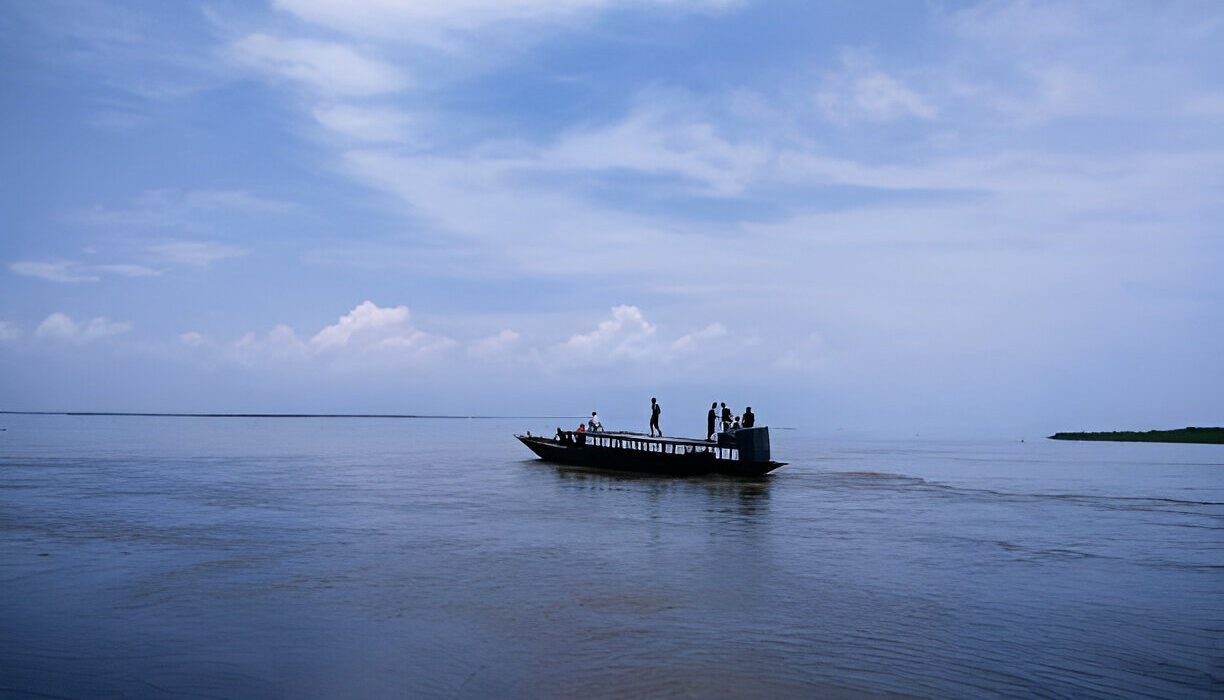The Brahmaputra River Basin (BRB) is one of South Asia’s most ecologically rich yet geopolitically fragile freshwater systems.
Originating from the Angsi Glacier in the Tibetan Plateau, the Brahmaputra River spans approximately 2,900 kilometres, traversing China (as the Yarlung Tsangpo), India, and Bangladesh before merging with the Ganges and emptying into the Bay of Bengal.
The river sustains an estimated 130 million people across its basin, providing water for agriculture, energy generation, drinking, and livelihoods while also supporting rich ecological diversity.
In recent years, the BRB has become a site of accelerating environmental risk, strategic tension, and institutional fragmentation.
This short report offers an overview of literature published on the BRB, a structured analysis of the challenges facing the Brahmaputra.
It proposes a coordinated governance strategy rooted in the Underwater Domain Awareness (UDA) framework.
Focusing on water security, river management, the China factor and the Indian approach, as well as climate stress, upstream damming, transboundary mistrust, and sediment instability, the report highlights the urgent need for integrated data systems, basin-wide collaboration, and community-driven resilience planning.
Introduction
One of the goals of India’s ‘Atmanirbhar Bharat’ launched by Hon’ble Raksha Mantri in September 2022 is Civil-Military Fusion (CMF). The concerted effort by the Ministry of Defence (MoD) has not just increased the indigenous components of defence acquisition, but India’s defence exports have reached an all-time high of ₹15,920 crore in FY 2022-23. Indian Navy’s consistent endeavour has been appreciated by Hon’ble Prime Minister during the recent ‘Swavlamban’ Seminar. However, changes in the nature and character of warfare have forced all countries to revisit their maritime defence strategies. Sabotage, grey-zone conflict, and asymmetric warfare are altering the balance of threat, even when the balance of power between countries remains relatively unchanged. Routine underwater commercial activities are being targeted and weaponised, increasing vulnerabilities to critical national infrastructure. Against this backdrop, the importance of Underwater Domain Awareness (UDA) need not be overstated. However, the mere absorption of advanced underwater technologies would be inadequate for optimal defence for critical underwater national assets, constituting an effective deterrence, or conducting an offensive/covert action against an adversary. There will be a need to synthesise the existing Organisations, Innovations, and Logistics, or the OIL of CMF for enhancing the UDA.
This paper seeks to examine the application of CMF in UDA. It studies the scope of increasingly vulnerable maritime infrastructure like oil and gas pipelines, electricity grids, and underwater communication networks that have emerged as the new frontlines of potential conflict. In addition, it identifies the possible vulnerabilities of adversaries in the immediate neighbourhood. The paper further explores the increased weaponisation of liminal technologies that could morph UDA from the benign realms of Science and Technology (S&T) to geopolitical and strategic contestation for monopoly in the years ahead. Therefore, the National Security Council will also have to identify new technologies requiring collaboration under the India-US Initiative on Critical and Emerging Technologies (iCET) in UDA domain. Finally, the paper suggests for enhancing India’s maritime security, minor structural changes that would be necessary by synthesising Organisations, such as International Fusion Centre – Indian Ocean Region (IFC-IOR), The Coast Guard, National Institute of Ocean Technology (NIOT), Ministry of Petroleum and Natural Gas (MoPNG), Ministry of Communications (MoC), and Ministry of Electronics & Information Technology (MoEIT).

Tejaswini Kaktikar
About Author
Tejaswini Kaktikar is an undergraduate student of Anthropology at University College London, with research interests at the intersection of environment, culture, and governance. Her current work focuses on the Brahmaputra River Basin, examining water security, river management, and strategic environmental policy through an anthropological lens. By combining cultural perspectives with ecological concerns, she aims to contribute to more inclusive and sustainable approaches to environmental challenges.


